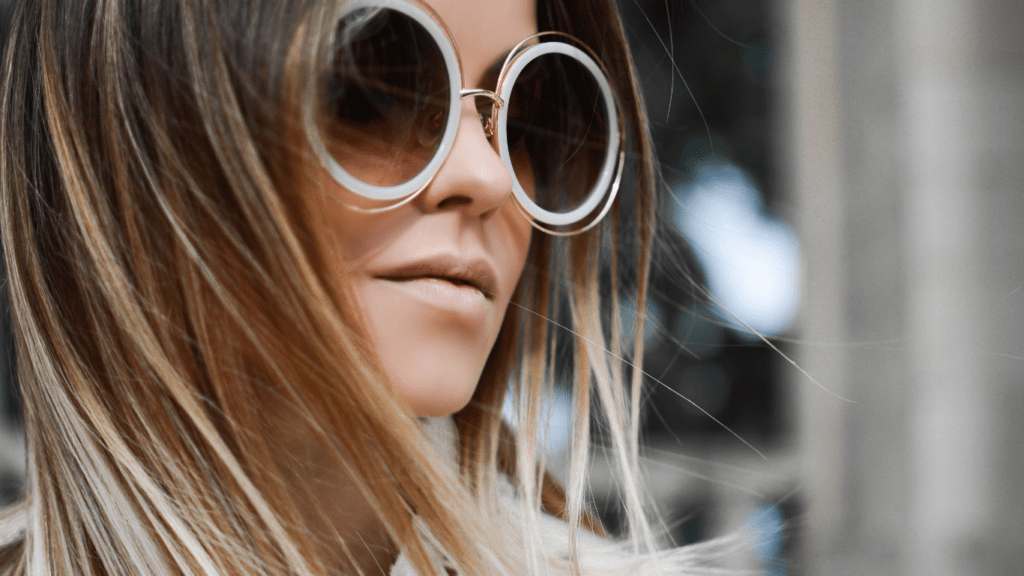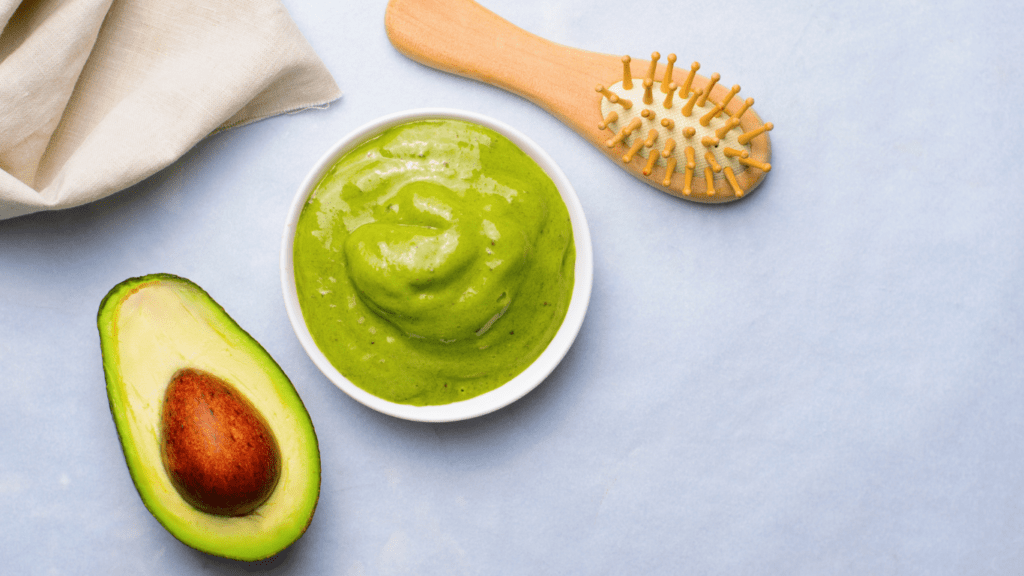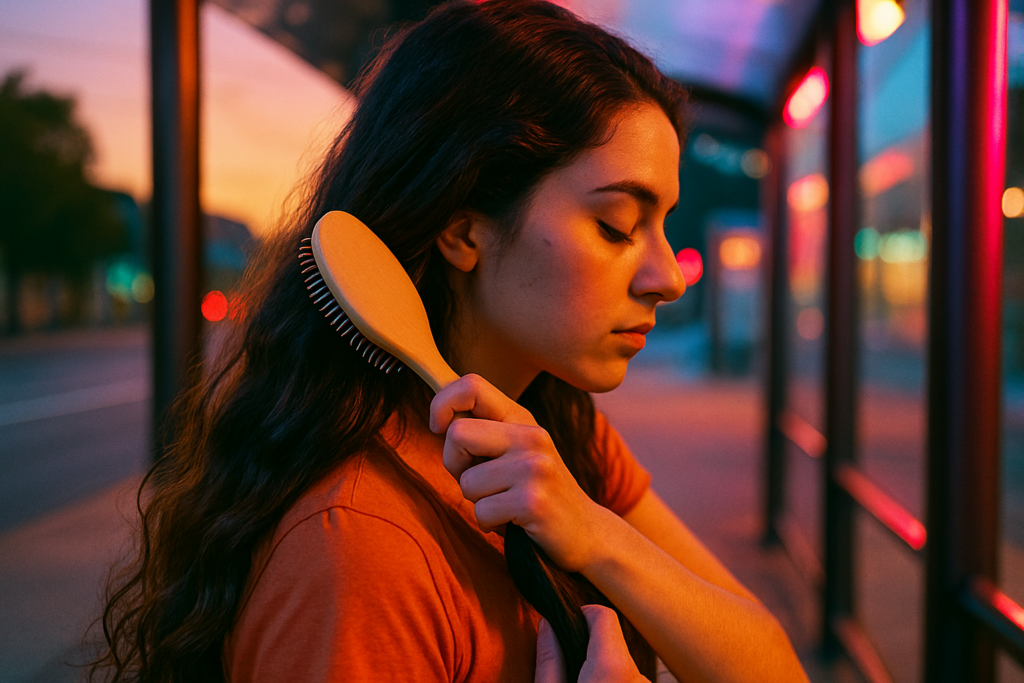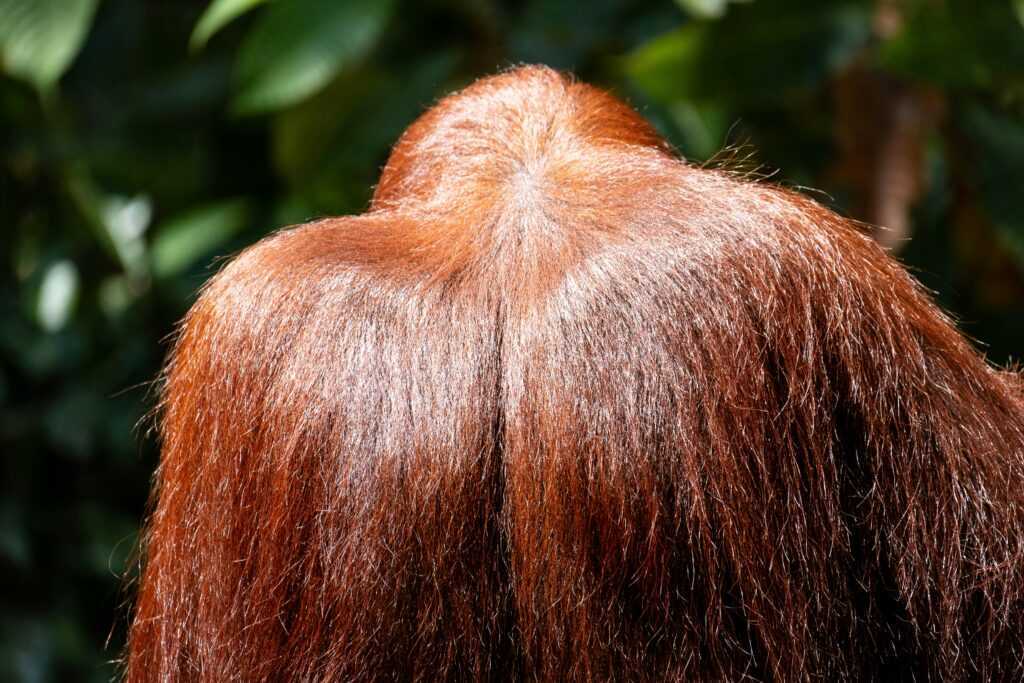Understand Your Hair Type
Knowing your hair type is essential for adopting the right habits and techniques. Different hair types require specific care to maintain health and shine.
Identifying Your Hair Type
Hair type is determined by texture, porosity, and thickness. Texture varies as straight, wavy, curly, or coily. Porosity indicates how well hair absorbs moisture, and thickness can be fine, medium, or coarse.
Note that genetics play a significant role in these attributes. Conducting a simple strand test helps. Smooth and cylindrical strands imply straight hair, whereas distinct “S” or “Z” shapes indicate wavy or curly hair, respectively.
Why It Matters
Understanding your hair type helps select appropriate products and routines. For instance, curly hair is prone to dryness and requires moisturizers like leave-in conditioners and oils. Straight hair often needs lightweight products to avoid oiliness. Matching hair type with products and techniques improves health and adds shine.
Proper Washing Techniques
Adopting proper washing techniques is essential for maintaining healthier, shinier hair. Following specific steps ensures that your hair receives the care it needs without damage.
Choosing the Right Shampoo
Choosing the right shampoo ensures effective cleansing. Hair type plays a significant role in determining which shampoo to use. Oily hair benefits from clarifying shampoos, while dry hair requires hydrating formulas. Color-treated hair needs sulfate-free shampoos to preserve color. Testing different products and paying attention to how your hair responds helps in finding the most suitable shampoo.
The Importance of Conditioner
Using conditioner after shampooing is crucial for moisturizing and detangling hair. Hair type dictates the kind of conditioner needed. Fine hair benefits from lightweight conditioners, while thick, curly hair requires intensive moisturizing products.
Applying conditioner from mid-length to ends prevents roots from becoming greasy. Leaving the conditioner on for the recommended time, often 2-3 minutes, maximizes its effectiveness.
Regular Trimming
Regular trimming contributes significantly to healthier, shinier hair. It removes damaged ends and promotes growth.
How Often to Trim
Getting a trim every 6-8 weeks prevents split ends. This frequency suits most hair types. However, if hair is curly or coarse, trimming every 8-12 weeks might be more suitable. Short hairstyles often require more frequent trims, about every 4-6 weeks, to maintain their shape.
Benefits of Regular Trims
Regular trims prevent split ends from traveling up the hair shaft, reducing breakage. They also keep hair looking thick and healthy. Trims can help manage frizz by removing dry, damaged ends. Additionally, trimmed hair facilitates better absorption of hair care products, maximizing their effectiveness.
Avoiding Heat Damage
Heat styling tools can cause significant damage to hair, leading to dryness and breakage. Reducing heat exposure ensures healthier, shinier hair.
Using Heat Protectants
Heat protectants form a barrier between hair and styling tools, reducing damage. I recommend applying a product with thermal protection up to 450°F. Common ingredients in these products include silicones (e.g., dimethicone) and natural oils (e.g., argan oil). Always distribute the heat protectant evenly through damp or dry hair before using flat irons, curling wands, or blow dryers.
Alternative Styling Methods
Embracing heat-free styling techniques preserves hair health. Try air-drying hair after washing instead of using a blow dryer. Use non-heat methods like braiding or twisting damp hair for curls or waves. Velcro rollers and foam curlers create volume and curls without damaging hair with heat. Additionally, select hairstyles like buns, ponytails, and braids that don’t require heat for a polished look.
By prioritizing non-heat styling and using protectants wisely, maintaining healthy, shiny hair becomes more manageable.
Nourishing Hair Masks

Nourishing hair masks play a vital role in achieving healthier, shinier hair. They offer deep conditioning and hydration that regular conditioners can’t provide. Explore DIY and store-bought options to enhance your hair care routine.
DIY Hair Masks
DIY hair masks utilize natural ingredients for effective results.
- Avocado and Honey Mask: Mash one ripe avocado and mix with two tablespoons of honey. Apply to damp hair and leave for 20 minutes. Rinse thoroughly. This mask moisturizes dry hair and adds shine.
- Yogurt and Olive Oil Mask: Combine half a cup of plain yogurt with two tablespoons of olive oil. Spread evenly through hair, wait 30 minutes, then wash out. It adds protein and strength to hair strands.
- Banana and Coconut Oil Mask: Blend one ripe banana with two tablespoons of coconut oil. Apply to hair and leave for 20 minutes. Rinse well. Ideal for combating frizz and split ends.
Store-Bought Options
Store-bought hair masks offer convenience and specialized formulations.
- Olaplex Hair Perfector No. 3: Known for repairing damaged hair and improving strength. Use once a week, applying to damp hair for 10 minutes before rinsing.
- Briogeo Don’t Despair, Repair! Deep Conditioning Mask: Contains B-vitamins and rosehip oil for moisture and protection. Apply to clean, damp hair, leave on for 10 minutes, then rinse.
- Moroccanoil Intense Hydrating Mask: Infused with argan oil for deep hydration and smoothness. Apply generously to towel-dried hair, leave for 5-7 minutes, then rinse thoroughly.
Utilize these nourishing hair masks regularly to enhance shine and health, complementing your trimming habits and heat-free styling techniques from previous sections.
Healthy Diet and Hydration
A balanced diet and adequate hydration directly impact hair health. To achieve shinier and healthier hair, focus on nutrients and hydration.
Essential Nutrients for Hair
Certain nutrients are crucial for strong, shiny hair.
These include:
- Protein: Hair follicles are made mostly of protein. Including lean meats, fish, eggs, and legumes in the diet ensures proper hair growth and strength.
- Vitamins: Vitamin A, E, and D are essential. Carrots, almonds, and sunlight exposure aid in maintaining a healthy scalp and preventing hair loss.
- Minerals: Iron and zinc support hair growth. Leafy greens and fortified cereals are rich in these minerals.
- Omega-3 Fatty Acids: These foster hair shine. Sources include fatty fish like salmon, as well as nuts and seeds.
Staying Hydrated
Hydration contributes to overall hair health. Drink at least 8 glasses of water daily to maintain moisture levels in hair strands. Utilize hydrating foods like cucumbers and watermelon to boost intake. Optimal hydration keeps both the scalp and hair well-nourished and resilient against damage.
Scalp Care
A healthy scalp is essential for achieving healthier, shinier hair. Neglecting the scalp can lead to various issues that hamper hair health.
Importance of a Healthy Scalp
Focusing on the scalp ensures that hair grows from a strong foundation. An unhealthy scalp may result in issues like dandruff, itchiness, and inflammation. These problems can impede hair growth and diminish shine. By keeping the scalp clean and well-nourished, I ensure a conducive environment for hair follicles to thrive.
Scalp Treatments
Regular Exfoliation: Exfoliating the scalp removes dead skin cells and buildup. I use a gentle scalp scrub or a brush with soft bristles weekly to keep the scalp clear of debris.
Moisturizing Oils: Applying oils like coconut, argan, or jojoba hydrates the scalp. Massaging these oils into the scalp boosts blood circulation and provides essential nutrients, promoting hair health.
Medicated Shampoos: For those with scalp conditions like dandruff or psoriasis, using medicated shampoos can help. Ingredients like ketoconazole, salicylic acid, or zinc pyrithione address specific issues effectively.
DIY Treatments: Homemade treatments such as a mixture of apple cider vinegar and water can restore the scalp’s pH balance. Applying a blend of aloe vera and tea tree oil can soothe an irritated scalp.
By incorporating these treatments into my routine, I support my scalp’s health, fostering an ideal environment for hair growth and shine.
Gentle Brushing
Gentle brushing is essential for maintaining healthy, shiny hair. It reduces breakage and encourages natural oils to distribute along the hair shaft.
Best Brushes for Your Hair
Using the right brush type for your hair can make a significant difference. Boar bristle brushes work well for distributing oils, making them ideal for all hair types. Paddle brushes with cushioned bases are great for minimizing damage in straight to wavy hair. Wide-tooth combs excel at detangling wet hair, reducing breakage. Use vented brushes for faster blow-drying with less heat damage, and round brushes to add volume to fine or thinning hair.
Brushing Techniques
Effective brushing techniques minimize hair damage. Always start brushing from the ends and work your way up to avoid tangles and breakage. Brush gently and spend extra time detangling sections to prevent damage. Brush in the morning and before bed to distribute natural oils evenly. Use a detangling spray or a leave-in conditioner to make brushing easier, especially for curly or textured hair.
Reducing Chemical Treatments
Chemical treatments damage hair, causing dryness and brittleness. To maintain healthier, shinier hair, reducing these treatments is essential.
Effects of Chemicals on Hair
Chemicals like sulfates and parabens strip hair of natural oils, leading to dryness. Regular chemical use weakens hair structure, causing breakage and split ends. Hair dye contains ammonia, which lifts the hair cuticle and damages the cortex. Relaxers and perms alter hair bonds, resulting in long-term damage if used frequently.
Natural Alternatives
Use natural ingredients to minimize chemical exposure. Henna offers a natural dye option without harmful chemicals. Aloe vera and coconut oil hydrate without build-up. DIY masks using honey, avocado, and yogurt nourish and enhance shine. For gentle cleansing, consider sulfate-free shampoos containing natural ingredients like tea tree oil and chamomile.
Protecting Hair From the Environment
Environmental factors significantly affect hair health. I prioritize sun protection and pollution defense to maintain healthier, shinier hair.
Sun Protection for Hair
UV rays damage hair, causing dryness, color fading, and brittleness. I use hair products containing UV filters, such as leave-in conditioners and sprays, to shield my hair against harmful sun exposure. For additional protection, hats and scarves serve as effective barriers, especially during peak sun hours. Consistent sun protection preserves hair vibrancy and strength.
Combatting Pollution
Pollution deposits harmful particles on hair, leading to buildup and dullness. I incorporate cleansing routines with clarifying shampoos and detoxifying treatments to combat pollution’s effects.
Ingredients like activated charcoal or tea tree oil in these products work well to remove toxins and impurities. Limiting exposure by tying hair up or wearing protective headgear reduces direct contact with pollutants for optimal hair health.



 Men’s Hair Care Specialist & Author
Araceline is a unique and valuable contributor, bringing her expert knowledge of men’s hair care and grooming trends. As an experienced author, she shares her deep understanding of hair painting, coloring techniques, and the specific needs of men’s hair. Araceline’s articles are both informative and engaging, offering men practical advice on maintaining stylish, healthy hair.
Men’s Hair Care Specialist & Author
Araceline is a unique and valuable contributor, bringing her expert knowledge of men’s hair care and grooming trends. As an experienced author, she shares her deep understanding of hair painting, coloring techniques, and the specific needs of men’s hair. Araceline’s articles are both informative and engaging, offering men practical advice on maintaining stylish, healthy hair.
